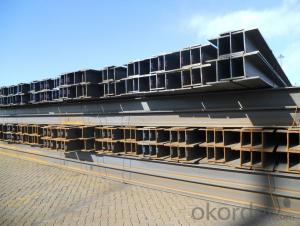Reinforcing bars, commonly known as rebar, are the unsung heroes of the construction world. They are the backbone of many construction projects, providing strength and stability to structures that we rely on every day. But what exactly are these metal rods made of, and why are they so important? Let’s dive into the world of rebar and find out.
A Brief History of Rebar
Rebar has been used in construction for centuries, but it wasn’t until the 19th century that its importance was truly recognized. The first recorded use of rebar was in Roman times, where it was used to reinforce concrete structures. However, it wasn’t until the 1850s that rebar started to become a standard material in construction projects. Since then, it has become an essential part of the construction industry.
The Science Behind Rebar
Rebar is made from steel, which is an alloy of iron and carbon. The carbon content in steel gives it the strength and durability needed for construction projects. The process of making rebar involves heating the steel to high temperatures and then rolling it into its characteristic ribbed shape. This ribbed pattern helps to bond the rebar with the concrete, creating a strong and stable structure.
Why Rebar is Essential
Rebar is used in a variety of construction projects, from bridges and buildings to roads and dams. It is essential for several reasons:
1. Strength: Rebar provides additional strength to the concrete, allowing it to withstand heavy loads and resist deformation.
2. Flexibility: Rebar can be bent and shaped to fit the specific needs of a project, making it a versatile material.
3. Durability: The steel used in rebar is resistant to corrosion, ensuring that the structure remains strong and stable over time.
4. Cost-effectiveness: Rebar is a relatively inexpensive material compared to other construction materials, making it an attractive option for many projects.
The Role of Rebar in Modern Construction
In today’s world, rebar is used in a wide range of construction projects. From high-rise buildings to large infrastructure projects, rebar plays a crucial role in ensuring the safety and stability of these structures.
1. High-rise Buildings: Rebar is used in the construction of high-rise buildings to provide additional support to the concrete structure. This helps the building to withstand the forces of gravity and wind.
2. Infrastructure Projects: Rebar is used in the construction of bridges, roads, and dams, providing the necessary strength and stability to these critical infrastructure components.
3. Residential Construction: Even in residential construction, rebar is used to reinforce concrete foundations, walls, and floors, ensuring the safety and durability of the home.
The Future of Rebar
As the construction industry continues to evolve, so too does the use of rebar. New technologies and materials are being developed to improve the strength and durability of rebar, making it an even more valuable resource for construction projects. Some of the advancements in rebar technology include:
1. High-strength rebar: This type of rebar is made from steel with a higher carbon content, providing increased strength and durability.
2. Corrosion-resistant rebar: This rebar is coated with a protective layer to prevent corrosion, extending its lifespan and ensuring the longevity of the structure it supports.
3. Shaped rebar: Rebar can now be manufactured in a variety of shapes, allowing for more efficient use in different construction applications.
In Conclusion
Rebar is a vital component of the construction industry, providing strength, flexibility, and durability to structures around the world. As technology continues to advance, we can expect to see even more innovative uses for rebar in the future. Whether it’s in the construction of towering skyscrapers or the reinforcement of critical infrastructure, rebar will continue to play a crucial role in shaping our world.

